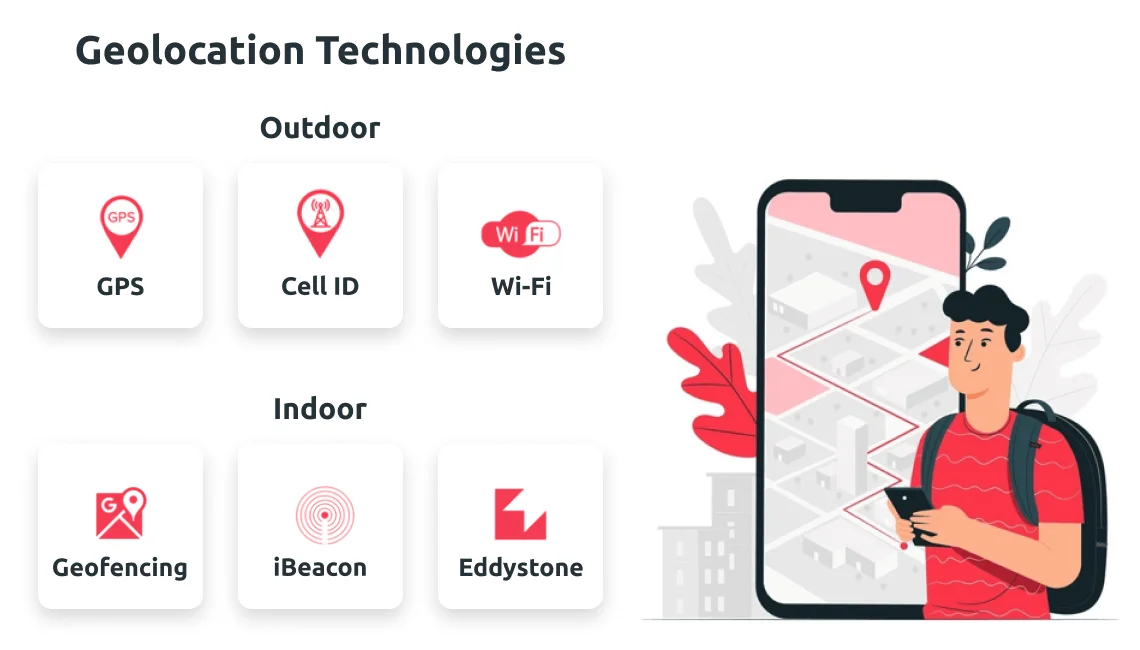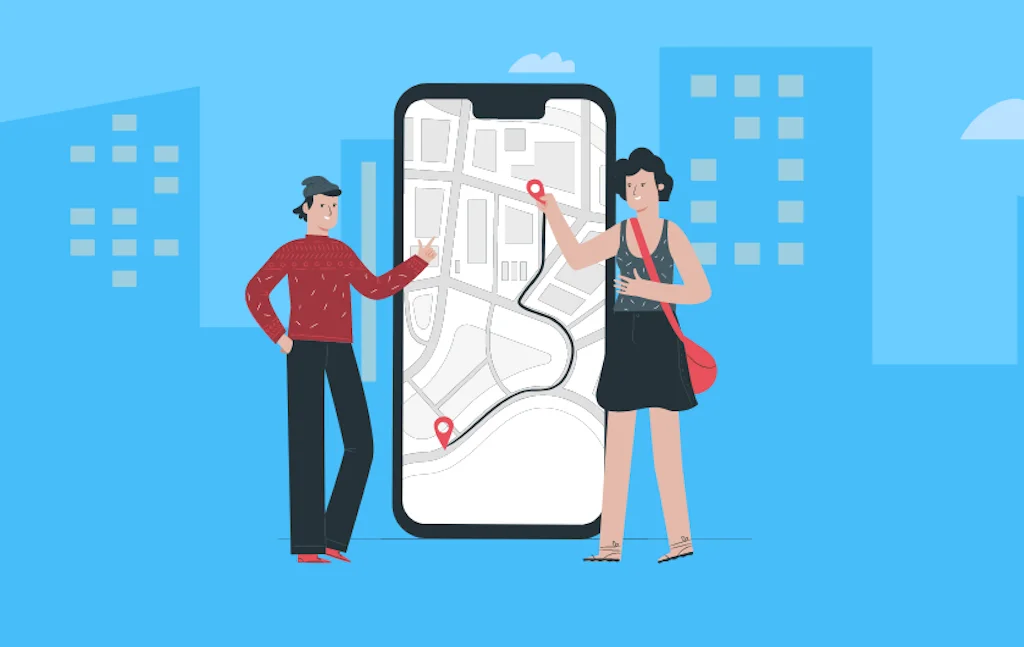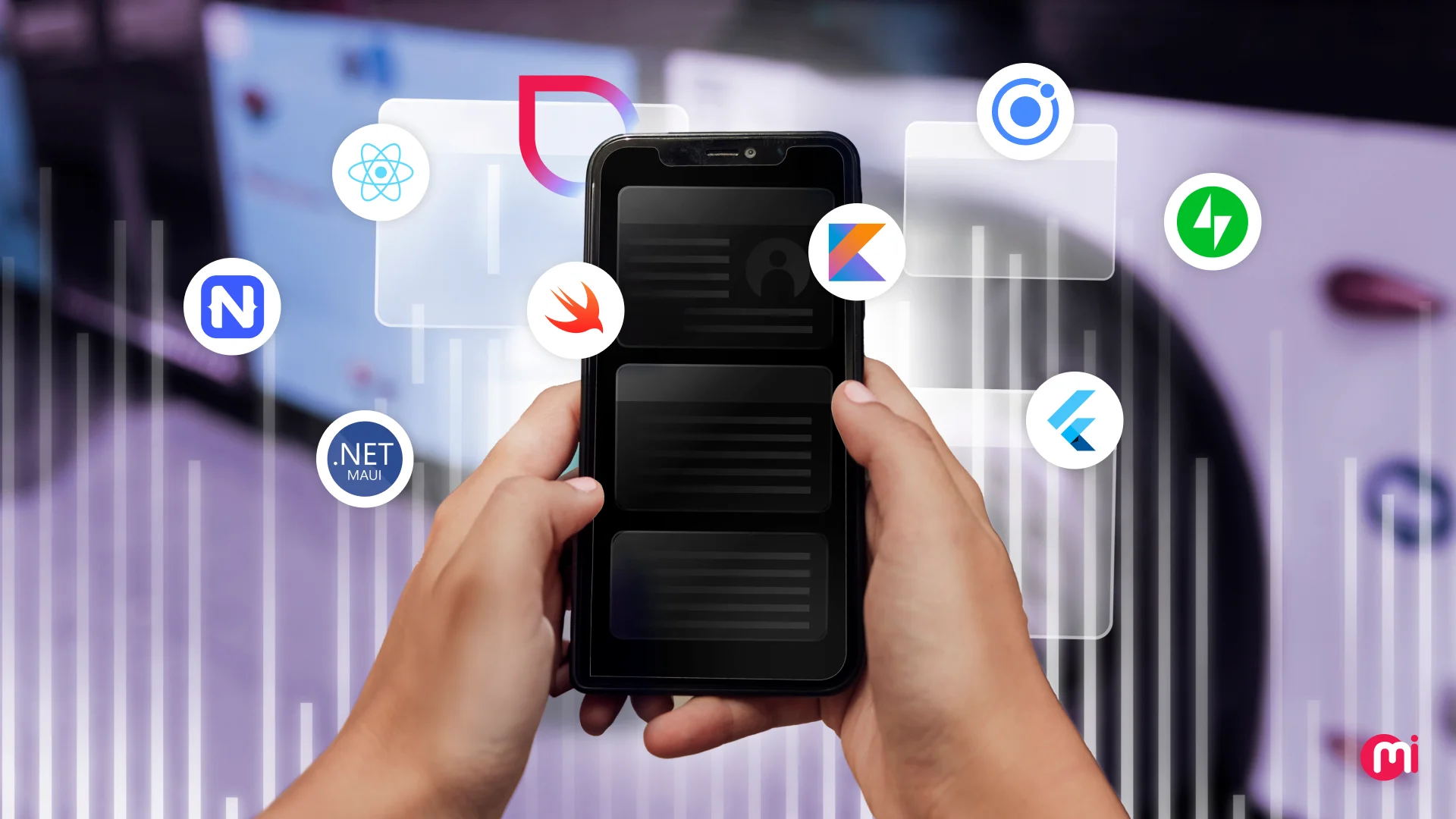The Complete Guide to Location-Based App Development
- Mobile
- February 13, 2022
If you’re a business, you should know by now what a typical customer needs. The idea is to get super responsive and address the needs of people without delay.
In a world where everyone seems to be searching for something or someone online, presenting the right solutions and meeting the demands counts. This is where on-demand location-based apps come into play.
Why Location-Based Apps Matter?
Wonder why they matter? Now, because we’re a generation that believes in facts, I’d like to under-prop my claims with proper statistics reported by Allied Market Research.
- The location-based services market is predicted to reach $157.34 billion by 2026.
- Market experts believe it will grow at a CAGR of 27.1% between 2019 and 2026.
Business developing apps based on geolocation technology are usually the ones that frame their services to be:
- Sources of information
- Media for social interaction
- Tools for market research
- Sources of infotainment
- Experiences of augmented reality
Below are the common industries that generally build applications based on such functionality.
- Weather
- E-Commerce
- On-demand services
- Automotive
- Travel and tourism
- Hotel and hospitality
- IoT
- Social media and dating
- Augmented and Virtual Reality
If your business is prepping to develop a location-based app for your services, I just explained why you need to do it at the earliest. However, the inner developer in me is itching to also tell you how to do it.
Read also: Advantages of Having a Location Based App for Your Business
Before that, you need to know…
How Do Location-Based Apps Work?
There are a few location-based technologies that can allow your app to track location. Such apps fetch location-based data in one or all of the following ways:

Outdoor Geolocation Technologies
Outdoor positioning technologies like GPS that help users with positioning themselves, showing accurate routes. Popular technologies for outdoor positioning system include the following:
Outdoor positioning technologies like GPS that help users with positioning themselves, showing accurate routes. Popular technologies for outdoor positioning system include the following:
GPS
Thanks to smartphone technology, we have GPS built-in our mobile devices now. Navigation satellites in space circling the Earth come into work and fetch the location and time details.
Of the 30+ satellites around our planet, a minimum of 4 is always accessible by GPS-enabled devices, which are designed to receive radio signals that are continuously sent out by these satellites.
Of the 4, the device receives signals from 3 satellites in its vicinity to figure out the distance. Once the calculation is done via a process called trilateration, a GPS device can find out your exact location easily.
Similarly, it can also figure out location-specific data such as routes, landmarks, and the likes. So you see, finding the northern star is simple in modern times.
Cellular Network
This one is the mobile network enabled by your service provider. Hundreds and thousands of radio base stations, which are termed cell towers, are set up by the provider company to enable cellular network-based tracking.
These cells are distributed physically over geographical land areas and have their last link as a wireless connection.
Once a mobile phone is connected to these cells, the device can easily figure out the location using a method known as triangulation where three cells form a base transceiver station. Connecting the dots is all that needs to be done here.
IP Based Location Tracking
Every device regardless of the type, brand, or model, which is Internet-enabled, has its unique IP address. This comes in handy when geographical locations need to be tracked.
Wi-Fi Positioning
Like GPS, we also have WPS, which stands for Wi-Fi Positioning System and leverages our beloved mode of staying connected. It uses the nearby active Wi-Fi hotspots and other access points to determine the geolocation of a device on the basis of signal strength.
Indoor Geolocation Technologies
Because GPS isn’t at its 100% inside buildings and closed locations, Indoor Positioning System comes in play. Think about QR Codes, Wi-Fi Access Points, Bluetooth beacons, NFC tags and the likes of it. That’s the exact technology! It’s all about the Internet of Things, remember?
Popular technologies for indoor positioning system include the following:
Geofencing
Location-based marketing is the crux of this technology that works by combining cellular data with Wi-Fi and GPS data. Geofencing works by implementing preset actions that are triggered when a mobile-enabled device enters a defined network radius.
This can be a static action based on a user’s positions relative to a location, dynamic based on changing positions of users, or peer-to-peer based on a user’s relative position to another. An incredible example is Alexa turning off the lights as you walk out of your residence.
Read also: Best Ways to Flourish Your Business with Geofencing Apps
Apple’s iBeacon and Google’s Eddystone
The two technologies work in a similar fashion by using BLE (Bluetooth Low Energy) to enable indoor positioning. iBeacon and Eddystone allow iOS and Android devices with special apps to receive signals from beacons.
These signals act as identifiers that trigger actions when the devices enter the range and receive them. Result? The user receives location-based information and services. For businesses, this is proximity marketing.
Coming back to our topic of discussion…
How to Develop a Location-Based App?
Let’s get into the technical stuff. Here’s a step-by-step development process that will help in building a location-based mobile app:
Step 1: Prototyping
A prototype is a draft version that allows you to see and feel the app. Prototypes allow you to gather feedback from the users and also make changes in the initial stages rather than identifying the required changes when the implementation has progressed too far.
You can choose a low fidelity prototype, which involves a rough representation of concepts through something as simple as paper drawings.
Read also: Thinking of Prototyping a Mobile App: Just Follow the Step by Step Procedure
Step 2: Design
A UI/UX design should be clean, innovative and should complement the app functionality, making the app easy to operate. A good UI/UX design can go a long way in making the app exciting and easy to use.
Read also: Importance of UI/UX Design in Mobile App Development
Step 3: App Development
This stage involves developing the various versions of the app, the iOS, Android, web version, etc, and ensuring that all the functionalities work perfectly.
Step 4: Testing
Testing identifies the apparent and hidden bugs. It ensures that the app doesn’t fail. Bug-ridden apps frustrate users, and it is difficult to gain them back once they have lost confidence in the app.
So, a strong testing process is important to keep the app smooth and error-free.
Step 5: App Release
In this phase, the app is made available to the users through the App Store, Play Store, and the websites.
Step 6: Marketing
A high performing useful app may not get downloads it deserves without the right marketing. Marketing gives the right exposure to your app.
Marketing should be done before, during and after the app development. You can also use social media to build a following and excitement among the users.
Things to Consider Before Developing Location-based App
If you want to create a geolocation app for your business, following things you have to keep in your mind while developing a location-based mobile app.
Know the Market
Study the market to understand your users, their problems and how your app can solve their problem. If you do not do enough research, you may develop a product that customers are not interested in.
Also, explore the existing apps, their strengths and weaknesses. This can give you ideas on how to improve the features, capabilities, and enhance the user experience.
Decide on In-house Development or Outsourcing
Both in-house development and outsourcing have their advantages and disadvantages. In-house development allows you to coordinate closely and add more features, but may involve more costs such as salaries, rent, software licenses, etc.
Outsourcing is economical but you may not be able to work closely and add features at the later stages.
Find the Right Partner
If you have chosen to outsource the app development, choose the right tech partner. How do you do that? Consider aspects such as: Does the company have enough experience? Did it work with location-based apps earlier? The company’s clients, the industries it has worked with, etc.
While partnering for app development, it is better to get the development and the UI design services from the same company as it makes coordination easy and saves time.
Read also: How to Choose the Best Mobile App Development Company?
Tech Stack
Developing any location-based app begins with this consideration. You’d always need two APIs – one for collecting information about a user’s location and the other for implementing the information to generate coordinates on the map.
For iOS devices, Google Maps API can be used to locate a user and Google Maps SDK or Apple MapKit to generate the map coordinates. For Android, Google Location Services API can be used for the first purpose and Google Maps API for the second.
You can go for Google Places API, Yelp API, Foursquare API and the likes for added features. All this needs to be decided before you start prototyping.
Focus on Safety
A focus on safety is essential while developing a location-based app. Your app should be safe from security risks such as data theft, data loss, and ransomware attack, etc.
Apps can be made secure by a number of features such as multi-factor authentication, SSL certificate, encryption with algorithms, etc. Explore all the security options before developing the app.
Final Thoughts
As I prepare to wrap up this article, I have ordered my food via an app already. I’ve checked for tomorrow’s weather via an app because my day begins with a mile long run tracked by another app. The weather reminds me of the winter and my defunct geyser.
So, I’ll now be looking for a repair professional using an app. By the way, did you just read this entire piece in an app? Think about it!
FAQs About Location-Based App Development
The location-based app uses real-time geo-data from a smartphone to send special offers and sales notifications. Sometimes, it helps in fraud prevention as well.
It is hard to find an app from your smartphone that doesn’t use geolocation: from your Camera app to Find My iPhone or Weather to Instagram, Uber, or Zomato. Almost every messenger app offers to share your location.
Location-based apps use a device’s GPS signals to track a user’s location if he has opted-in to allow the service for the same. Based on the location, businesses send offers and other sales messages to the users.
You need to follow a step-by-step development process to build a location-based mobile app: Prototyping, Design, Development, Testing, App Release, and Marketing.
It is not easy to answer the exact cost to develop a location-based app as it depends on the complexity of the design, location of the developer, features, and functionalities you need to add in your app.













